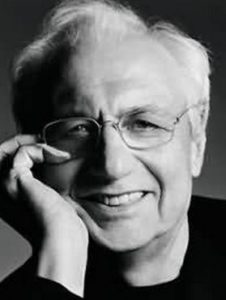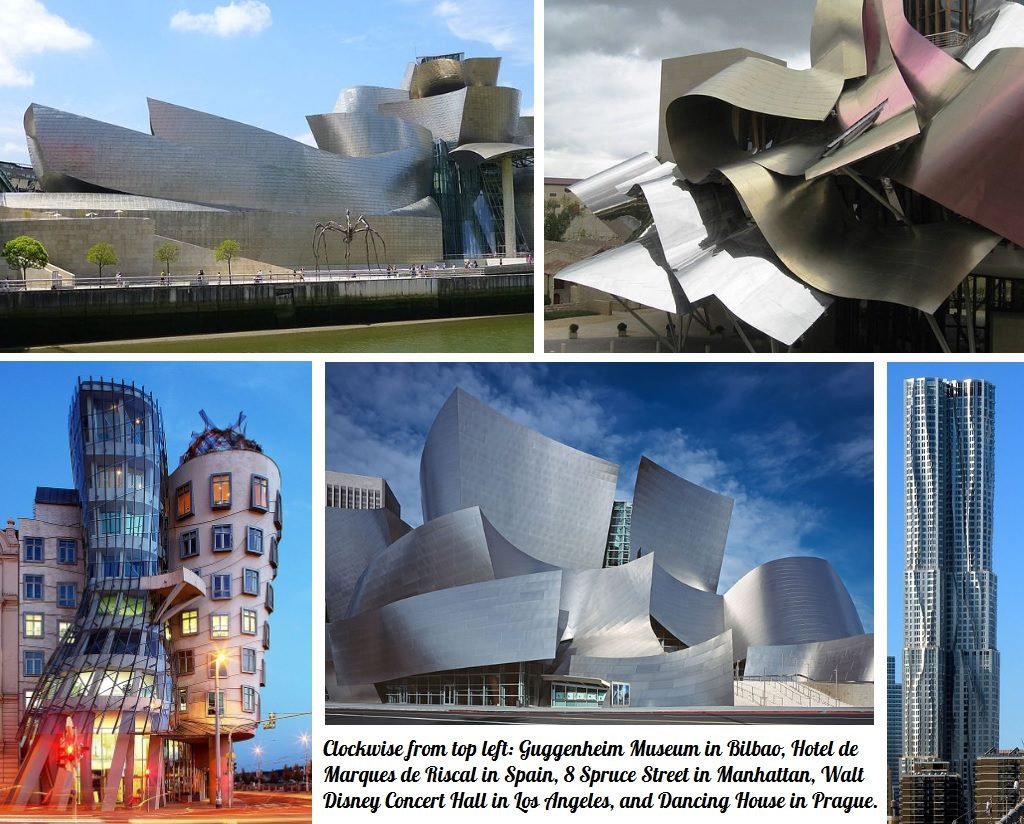 Frank Owen Ephraim Goldberg (b. 1929) was born in Toronto, the son of a Russian-Jewish father from New York, and a Polish-Jewish mother. As a child, he enjoyed constructing model buildings and cities with his grandmother, using scraps from his grandfather’s hardware store. After he finished high school, the family moved to California and he soon enrolled in architecture studies. It was there, because of ceaseless anti-Semitism, that he changed his last name to “Gehry”. Meanwhile, he worked as a truck driver, radio announcer, and served in the US Army before going to Harvard for graduate studies in design. Gehry got an architecture job back in Los Angeles and started wowing people with his unique designs. After a stint in Paris, he opened up his own practice. In 1989, he won the Pritzker Architecture Prize, bringing him even more fame. His Guggenheim Museum in Bilbao, Spain was described as “the greatest building of our time”. It inspired what is now called the Bilbao Effect – a “revitalization of cities through iconic, innovative architecture.” Since then, Gehry has become the world’s most influential and well-known architect, and is regularly involved with some of the most high profile projects around the globe. In addition to lecturing as Professor of Architecture at the University of Southern California, Gehry also designs museum sets and exhibitions, furniture, sculptures, and has created six lines of jewellery for Tiffany & Co. He also designed the World Cup of Hockey, and developed new architectural software. Gehry has won countless awards, including the Order of Canada, and last week received the Presidential Medal of Freedom. Sydney Pollack made a documentary about Gehry’s work, and Vanity Fair described him as “the most important architect of our age.”
Frank Owen Ephraim Goldberg (b. 1929) was born in Toronto, the son of a Russian-Jewish father from New York, and a Polish-Jewish mother. As a child, he enjoyed constructing model buildings and cities with his grandmother, using scraps from his grandfather’s hardware store. After he finished high school, the family moved to California and he soon enrolled in architecture studies. It was there, because of ceaseless anti-Semitism, that he changed his last name to “Gehry”. Meanwhile, he worked as a truck driver, radio announcer, and served in the US Army before going to Harvard for graduate studies in design. Gehry got an architecture job back in Los Angeles and started wowing people with his unique designs. After a stint in Paris, he opened up his own practice. In 1989, he won the Pritzker Architecture Prize, bringing him even more fame. His Guggenheim Museum in Bilbao, Spain was described as “the greatest building of our time”. It inspired what is now called the Bilbao Effect – a “revitalization of cities through iconic, innovative architecture.” Since then, Gehry has become the world’s most influential and well-known architect, and is regularly involved with some of the most high profile projects around the globe. In addition to lecturing as Professor of Architecture at the University of Southern California, Gehry also designs museum sets and exhibitions, furniture, sculptures, and has created six lines of jewellery for Tiffany & Co. He also designed the World Cup of Hockey, and developed new architectural software. Gehry has won countless awards, including the Order of Canada, and last week received the Presidential Medal of Freedom. Sydney Pollack made a documentary about Gehry’s work, and Vanity Fair described him as “the most important architect of our age.”
Words of the Week
I never wanted to be the next Bruce Lee. I just wanted to be the first Jackie Chan.
– Jackie Chan

